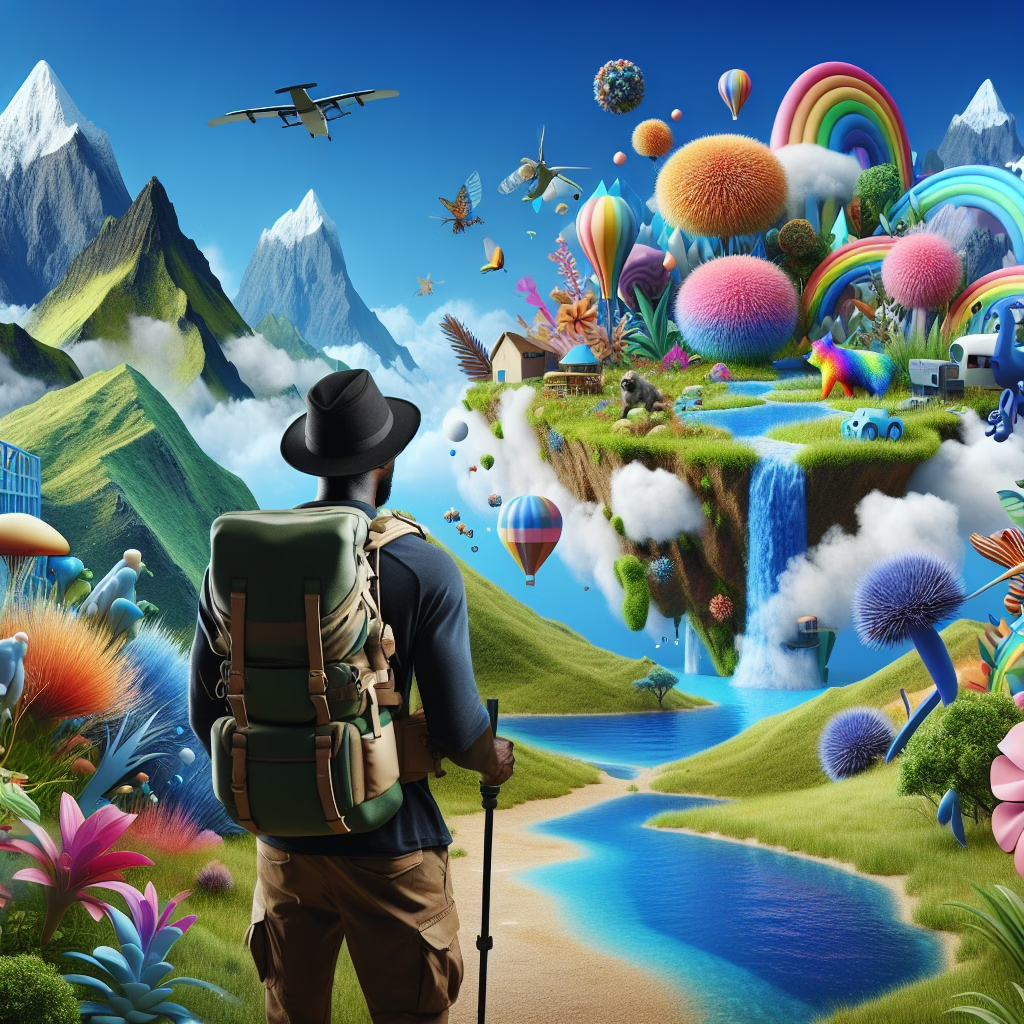In a world where artificial intelligence continues to make our jaws drop and our wallets cringe, new AI models are stepping up to turn your mundane photos into explorable 3D worlds. Yes, you heard it right! Your vacation selfies could soon become immersive virtual adventures—complete with the same awkward poses and questionable fashion choices. But before you pack away your luggage for a virtual trip, let’s unpack the details of this groundbreaking technology and some delightful caveats that come with it.
What’s Cooking in the AI Kitchen?
The latest advancements in AI models are not just for churning out cat memes or generating overly enthusiastic marketing slogans. They’re venturing into the realm of converting flat images into dynamic 3D spaces. Imagine having a photo of your backyard barbecue morph into a full-blown virtual reality experience where you can walk around, pick up virtual hotdogs, and maybe even relive that epic slip-and-fall moment—without the bruises!
This innovative tech uses sophisticated algorithms that analyze depth, textures, and spatial relationships within the photographs. So while your friends might still struggle to figure out who’s who in your holiday snaps, at least they can navigate through a thrilling 3D version of your trip!
Exploring the Terrain: How It Works
Now, how does this magic happen? The AI models take a single image and process it to create a 3D mesh. This mesh forms the skeleton of your new world, allowing the software to fill in textures and create a virtual environment that feels surprisingly real. If you think about it, it’s like giving your photos a second chance at life—almost like a digital resurrection but without any creepy implications.
However, this isn’t all sunshine and rainbows. The technology has its quirks. For instance, complex scenes with lots of overlapping objects may leave the AI scratching its metaphorical head. So while Uncle Bob might be standing in front of the grill with a burger in hand, don’t be surprised if he turns into an amorphous blob when rendered in 3D.
The Caveats: Proceed with Caution
As with all great things that sound too good to be true (like those workout ads promising six-pack abs from just one crunch), there are caveats worth considering. The realism of these generated worlds can vary dramatically based on the quality of the original photo. If your image is dimly lit or poorly framed, don’t expect an Oscar-worthy performance from the AI. Instead, you might end up with a distorted version of yourself that would make even Picasso raise an eyebrow.
Moreover, privacy concerns loom large over this AI transformation extravaganza. As we venture further into this digital landscape, ethical considerations regarding data use come to light. Who owns these newly minted virtual worlds? Are they public domain or do they belong to the same companies that churn out those pesky cookie policies? Keep your eyes peeled as these questions evolve alongside the technology itself!
Future Possibilities: The Sky’s the Limit
The future looks bright (and perhaps slightly bizarre) as we continue to develop these AI models capable of creating immersive experiences from our everyday photos. Imagine schools using these tools for educational purposes—turning history lessons into explorations of ancient ruins or exploring ecosystems through vibrant landscapes captured by students’ cameras. Classes could take virtual field trips, enriching the learning experience like never before!
Even artists can embrace this technology to craft interactive exhibits where viewers can wander through their creations and engage with art in ways we’ve never seen before! The possibilities are endless—just like your Aunt Linda’s stories about her cats. Combining AI with creativity might just lead to the next revolutionary wave of artistic expression.
Wrapping It Up: What’s Next?
As we stand on the brink of this exciting new era where AI models transform our photographic memories into immersive 3D realms, it’s essential to remain both excited and cautious. Sure, it’s fantastic to think about how our memories can be reimagined, but we must also navigate the ethical waters carefully.
So grab your smartphone camera and start snapping those pictures—you might just be on the verge of creating the next great digital masterpiece! And who knows? Maybe one day you’ll stroll through your own curated gallery filled with vibrant memories reimagined into breathtaking worlds.
What do you think about this intriguing technology? Would you dive into a 3D version of your favorite vacation spot? Share your thoughts below!
Special thanks to Ars Technica for inspiring this playful exploration!

